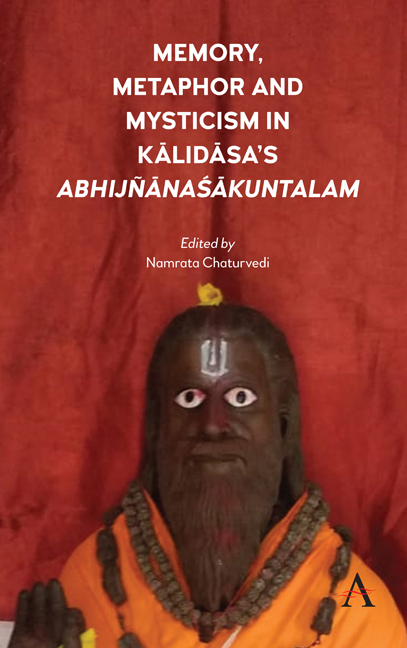Chapter 4 - Śakuntalā and the Bible: Parallels andResonances
Published online by Cambridge University Press: 23 February 2022
Summary
In this chapter, my attempt is to read Kālidāsa'sclassic AbhijñānaŚākuntalam through somebiblical narratives. The objective is to bring outthrough this method the beauty of both the Indianclassical as well as the biblical narratives as theygrapple with human realities and experiences. Whatis expected is mutual enrichment of both the texts –Śakuntalā andbiblical texts – as bearers of ever new impulses andmeanings. This attempt is based upon certainpremises and assumptions about the art and method ofinterpretation as well as understanding aboutliterature and poetics.
Prelude to Hermeneutics andIntertextuality
Traditional Indian hermeneutics and contemporaryWestern theories of interpretation are at one inacknowledging the open-endedness of texts, whichallow them to be understood in infinite ways. Itmeans that the text is not bound to the meaning ofthe author and his or her intentionality. Thedhvaniinterpretation in Indian tradition is based on theassumption that a text is autonomous and need not bebound by the meaning of the author. In biblicalstudies and researches, when there was the danger oflimiting oneself to the literal sense of the texts,the search for the sociocultural context of theirorigin came to assume great importance as a means toovercome any biblical fundamentalism ininterpretation. Hence from the nineteenth centuryonwards, the historic-critical method gainedmomentum and it helped situate the text in contextand challenge biblical fundamentalism. From anotherangle, realizing that literal sense does not bringout the depth of the texts, early Christian writers,following some Jewish interpreters, laid stress onthe allegorical meaning. The allegorical method ofinterpretation broke the limits of literalinterpretation, pointing to truths which lie beyondthe text.
The developments in the study of the biblical texts goalong with the new insights provided by contemporaryphilosophical hermeneutics and the contribution ofmodern linguistics. These have created a theoreticalspace to read one particular text through anothertext. This is not totally new in Indian tradition.For in the tradition of writing bhāshyas, one of the strategies was toillumine one text through another. This is a stepfurther to reader-centred interpretation, namely,reading of a text from the existential situation inwhich the reader finds herself.
- Type
- Chapter
- Information
- Publisher: Anthem PressPrint publication year: 2020



